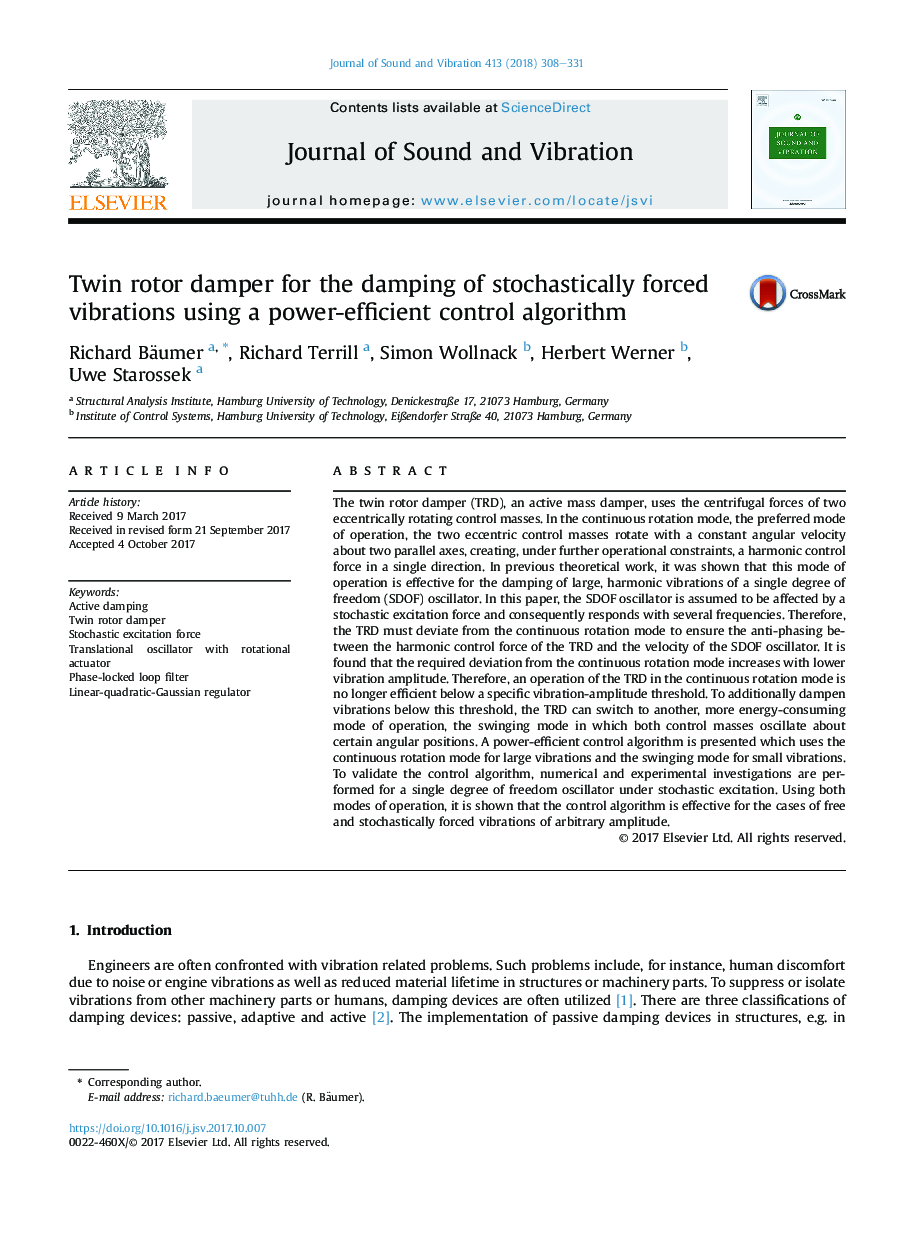| کد مقاله | کد نشریه | سال انتشار | مقاله انگلیسی | نسخه تمام متن |
|---|---|---|---|---|
| 6754168 | 1430820 | 2018 | 24 صفحه PDF | دانلود رایگان |
عنوان انگلیسی مقاله ISI
Twin rotor damper for the damping of stochastically forced vibrations using a power-efficient control algorithm
ترجمه فارسی عنوان
دمپر روتور دوقلو برای خاموش کردن ارتعاشات غیر مجاز با استفاده از الگوریتم کنترل قدرت کارایی
دانلود مقاله + سفارش ترجمه
دانلود مقاله ISI انگلیسی
رایگان برای ایرانیان
کلمات کلیدی
مخلوط فعال دمپر روتور دوقلو، نیروی تحریک اتفاقی، نوسانگر انتقال با عملگر چرخشی، فیلتر حلقه فاز قفل شده رگولاتور خطی-درجه دوم-گاوسی،
موضوعات مرتبط
مهندسی و علوم پایه
سایر رشته های مهندسی
مهندسی عمران و سازه
چکیده انگلیسی
The twin rotor damper (TRD), an active mass damper, uses the centrifugal forces of two eccentrically rotating control masses. In the continuous rotation mode, the preferred mode of operation, the two eccentric control masses rotate with a constant angular velocity about two parallel axes, creating, under further operational constraints, a harmonic control force in a single direction. In previous theoretical work, it was shown that this mode of operation is effective for the damping of large, harmonic vibrations of a single degree of freedom (SDOF) oscillator. In this paper, the SDOF oscillator is assumed to be affected by a stochastic excitation force and consequently responds with several frequencies. Therefore, the TRD must deviate from the continuous rotation mode to ensure the anti-phasing between the harmonic control force of the TRD and the velocity of the SDOF oscillator. It is found that the required deviation from the continuous rotation mode increases with lower vibration amplitude. Therefore, an operation of the TRD in the continuous rotation mode is no longer efficient below a specific vibration-amplitude threshold. To additionally dampen vibrations below this threshold, the TRD can switch to another, more energy-consuming mode of operation, the swinging mode in which both control masses oscillate about certain angular positions. A power-efficient control algorithm is presented which uses the continuous rotation mode for large vibrations and the swinging mode for small vibrations. To validate the control algorithm, numerical and experimental investigations are performed for a single degree of freedom oscillator under stochastic excitation. Using both modes of operation, it is shown that the control algorithm is effective for the cases of free and stochastically forced vibrations of arbitrary amplitude.
ناشر
Database: Elsevier - ScienceDirect (ساینس دایرکت)
Journal: Journal of Sound and Vibration - Volume 413, 20 January 2018, Pages 308-331
Journal: Journal of Sound and Vibration - Volume 413, 20 January 2018, Pages 308-331
نویسندگان
Richard Bäumer, Richard Terrill, Simon Wollnack, Herbert Werner, Uwe Starossek,
